RetroLisa
-----------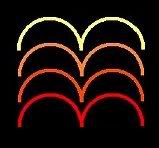 |
1970s Television | |
|
___________________________________________________________________________________________________________
|
|
|
RetroLisa
x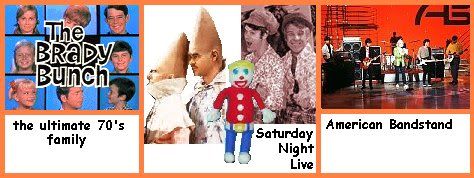 | ________________________________________________ | ___ | ______________________________________________ | ________ | Trends & Memories
classic scenes

"Went With The Wind"
Rat Butler: "Starlett, that gown is gorgeous."
Starlett O'Hara: "Thank you. I saw it in the window, and I just couldn't resist it."
In Carol Burnett's hilarious 1976 spoof of Gone With The Wind, Starlett O'Hara makes a dress out of curtains, just like her big-screen counterpart....complete with curtain rod still attached.
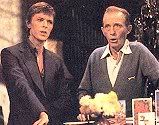
an unlikely pair
Bing Crosby and David Bowie sing a duet on Bing's last Christmas special in 1977.
Transcript & Lyrics
An Odd Story Of Holiday Harmony
 Peace On Earth/Little Drummer Boy Peace On Earth/Little Drummer Boy
| |
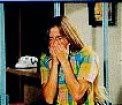
oh my nose!
Marcia Brady: "My brothers were playing football, and my nose got in the way. There goes my date with Doug."
In this 1973 Brady Bunch episode, poor Marcia breaks her date with Charlie to go out with Doug, the "big man on campus." A swollen nose soon changes everything. This episode also gave us that classic line used by date-breakers everywhere: "Something suddenly came up."
(Bonus trivia points: what classic 1960s movie did the actor who portrayed Doug Simpson appear in? ...see Trivia Answers below)
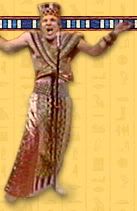
a moment in history:
Saturday Night Live
April 22, 1978
Many people consider this broadcast to be the best in SNL's history. The host was Steve Martin and the musical guests were The Blues Brothers.
classic skits included
 King Tut King Tut
|
__________________________________________
|
|
|
RetroLisa
| ______________________________________________________________ | __ | _____________________________ | ____________ | 1) On The Hollywood Squares, who always sat in the center square?
2) How many actresses have portrayed Charlie's Angels?
3) What real-life musical family was The Partridge Family based on?
4) Before coming to WKRP In Cincinnati, Dr. Johnny Fever was fired from his radio job in California for doing what?
5) Which Brady Bunch son had his hair dyed because it wasn't dark brown like the other Brady men?
6) Which cast member of the short-lived New Laugh-In went on to superstardom later in the decade?
7) Which popular 1970s sitcom started out as a skit on Love, American Style?
8) Mork & Mindy was not the first time Mork was sighted on our planet. On which sitcom did he make his debut?
9) At the M*A*S*H 4077th, the signpost pointed to nine different locations. Can you name them?
10) What did Redd Foxx have in common with his alter-ego, Fred Sanford?
11) What distinguished Jamie Farr (Corporal Klinger) from the other M*A*S*H cast members?
12) On The Love Boat, which guest-star took more trips on the Pacific Princess than anyone else? | | 1970s TV Trivia ChallengeThe Doctor is in!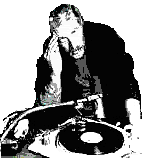 ( Scroll down for the answers) |
| ________________________________________________ | ___ | ________________________________________________ | ____ | 13) Can you match the actor with the TV role he was originally considered for or turned down?
1. Mickey Rooney
2. John Wayne
3. Alan Hale Jr.
4. David Cassidy
5. Bing Crosby
6. Henry Fonda
7. Robert Blake
8. Gene Hackman
| |
1. Sam the Butcher (The Brady Bunch)
2. Jim Rockford (The Rockford Files)
3. Dr. Johnny Fever (WKRP In Cincinnati)
4. Lt. Columbo (Columbo)
5. Mike Brady (The Brady Bunch)
6. Matt Dillon (Gunsmoke)
7. Archie Bunker (All In The Family)
8. John Walton (The Waltons)
|
_________________________________________________
|
|
|
RetroLisa
| ___________________________________________________________________ | __ | _____________________________ | _______ | Cable TV
Cable TV was invented in 1948. At first, its sole purpose was to pick up distant television signals and send them to subscribers in remote areas who otherwise couldn't receive them.
During the 1950s and 1960s, the cable industry grew slowly but steadily. The early 1970s brought some difficulties. Over-the-air broadcasters were violently opposed to cable TV, and most large cities were reluctant to launch cable systems. The harsh restrictions placed on cable content by the FCC in 1966 were still in effect. To top it off, some of the shows on the local access channels were definitely in bad taste!
In the mid 1970s, business picked up when many of the regulations were modified or removed. Cable subscriptions rose from 8 percent of all households in 1970 to 23 percent in 1980.
CATV
Before satellite transmission was introduced, cable operators received programming by antenna and microwave tower. During this time, cable TV was known as CATV, or Community Antenna Television. This type of transmission prevented most cable channels from expanding beyond their local or regional coverage areas.
special programming
In 1971, the technology of filtering allowed cable operators to block access to a particular channel by placing a trap on a subscriber's line. This made it possible for cable operators to air premium content that was accessible by paying an extra fee.
Beginning in 1972, some new channels bypassed over-the-air broadcasting completely and went directly to cable. They included the first specialty channels and public access channels.
movies at home
In 1972, a new type of specialty channel was born when Home Box Office (HBO) went on the air. HBO's evening lineup consisted of new movies and exclusive sporting events, shown uncut and commercial-free. HBO was the first channel to use the new filtering technology, which made it the first premium channel. For the first few years, HBO didn't fare very well. Transmission by microwave was inefficient and expensive, and many subscribers were unhappy with the variety of content.
satellite technology
In 1975, HBO leased a transponder on RCA's Satcom 1 communications satellite. The transponder relayed signals from an uplink facility to receiving dishes owned by the cable operators. The change was drastic and immediate, and HBO subscriptions went up 500 percent in one year.
This new method of transmission caught on like crazy, and soon other cable and broadcast channels were putting their signals on satellites and offering their services to cable operators. After converting to satellite distribution, cable channels became known as cable networks and over-the-air stations became superstations.
new cable networks
new superstations
Qube
In 1977, Warner Cable introduced the first interactive cable package to Columbus, Ohio. Qube was a 30-channel package consisting of broadcast stations, pay-per-view channels and specialty channels. Pressing buttons on a "black box" allowed subscribers to choose premium programs and participate in polls and game shows. One of the most popular specialty channels on Qube was Pinwheel, which featured children's programming. In 1979, Warner Cable put the Pinwheel signal on a satellite and renamed it Nickelodeon.
As revolutionary as it was, Qube was not financially successful, and ceased operations in 1985.
how many channels?
In the early 1970s, cable systems could carry 12 channels, although the average system only carried seven. The capacity was increased to 35 channels in 1974. These new channels used frequencies that TV sets weren't able to receive, which resulted in the development of the set-top converter box. Although 35 channels were possible, most cable operators didn't use all of them. In 1976, 88 percent of cable systems offered fewer than 21 channels.
Warner AMEX Qube
History Of Public Access TV
Cable Center
When Cable Went Qubist
How Cable TV Works
| | 

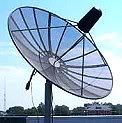

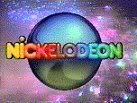
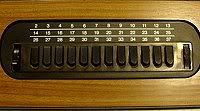
Set-top converter
|
_________________________________________________
|
|
|
RetroLisa
__________________________________________
|
|
|
RetroLisa
__________________________________________
|
|
|
RetroLisa
__________________________________________
|
|
|
RetroLisa
__________________________________________
|
|
|
RetroLisa
__________________________________________
|
|
|
RetroLisa
| ______________________________________________________________________ | __ | _____________________________ | ____ | Trivia Answers
1) Paul Lynde was always the center square.
2) Six actresses portrayed the Angels (Farrah Fawcett, Kate Jackson, Jaclyn Smith, Cheryl Ladd, Shelley Hack and Tanya Roberts).
3) The Partridges were patterned after The Cowsills.
4) Dr. Johnny Fever was fired for saying "booger" on the air.
5) Mike Lookinland (Bobby) has red hair in real life, so his hair was dyed dark brown for the series.
6) The New Laugh-In featured a pre-Mork Robin Williams.
7) Love, American Style served as the testing-ground for the pilot episode of Happy Days.
8) Mork's first visit to Earth took him to Milwaukee, where he was spotted by Richie Cunningham on Happy Days.
9) The 4077th signpost pointed to Coney Island, Burbank, San Francisco, Death Valley, Indianapolis, Decatur, Tokyo, Boston and Seoul.
10) Redd Foxx and Fred Sanford shared more than just a crotchety temperament. Redd Foxx's real name was John Sanford.
11) Besides the fact that his character liked to wear dresses, Jamie Farr was the only M*A*S*H cast member who actually served in Korea.
12) Charo took more trips on the Pacific Princess than anyone else. "cootchy cootchy!"
13) Actors and the parts they turned down:
Mickey Rooney.....Archie Bunker
John Wayne.....Matt Dillon
Alan Hale Jr......Sam the Butcher
David Cassidy.....Dr. Johnny Fever
Bing Crosby.....Lt. Columbo
Henry Fonda.....John Walton
Robert Blake.....Jim Rockford
Gene Hackman.....Mike Brady
Bonus) Nicholas Hammond, who portrayed Doug Simpson on the Brady Bunch, played the eldest Von Trapp son Friedrich in The Sound Of Music.
| |
|
_________________________________________________
|
|
|
